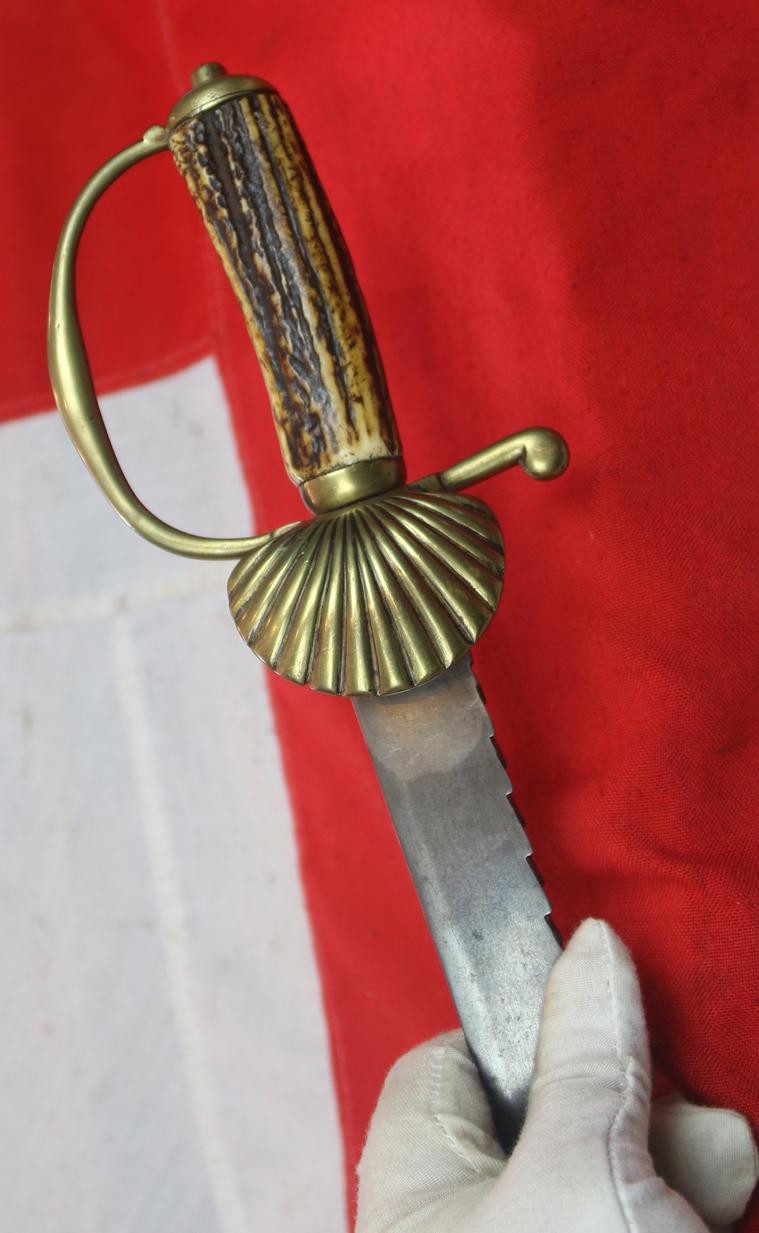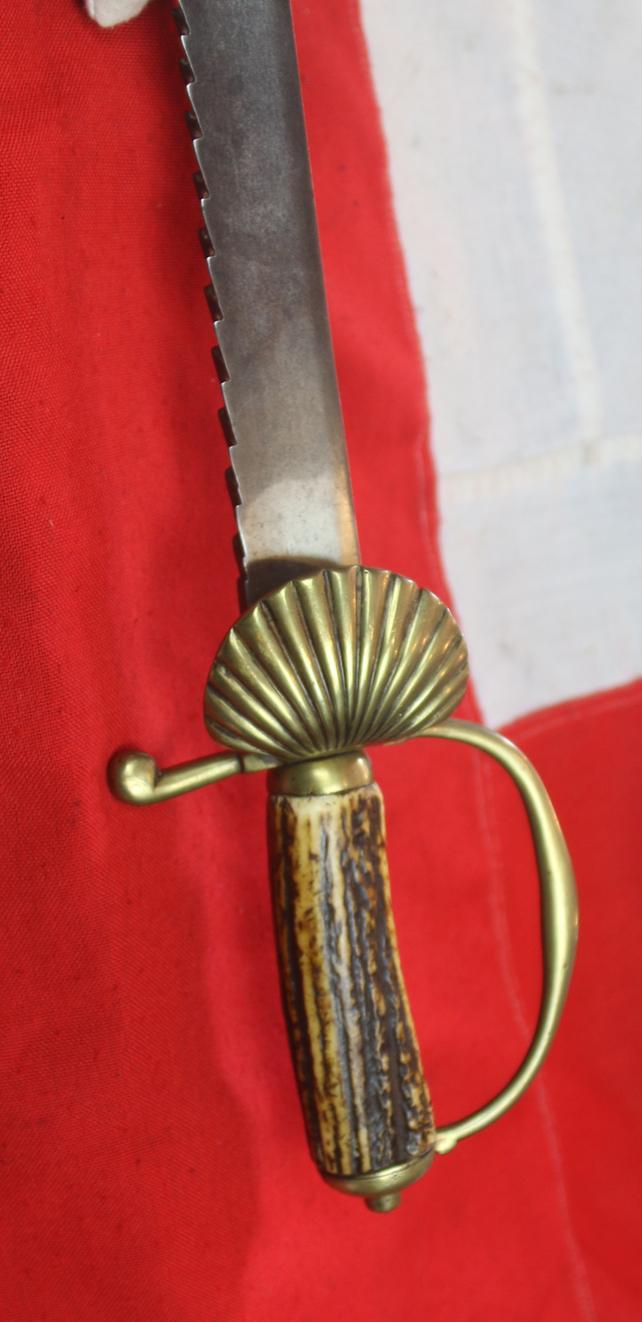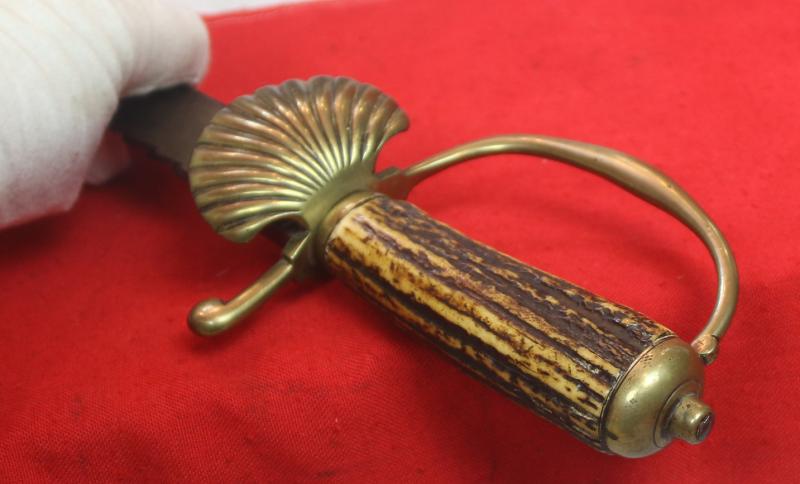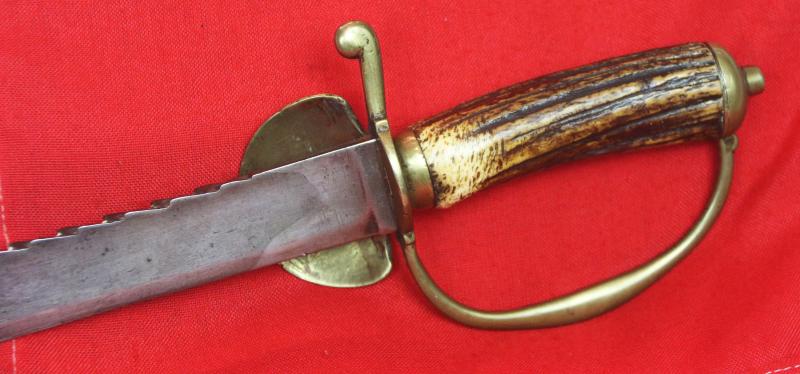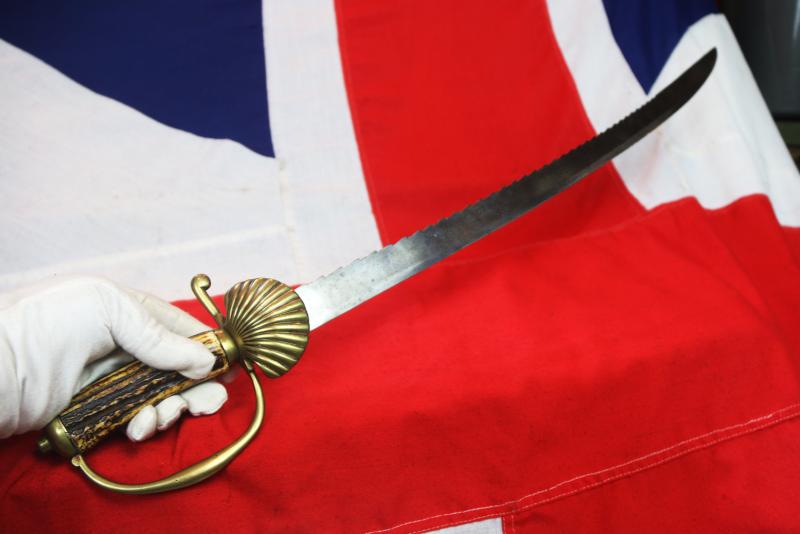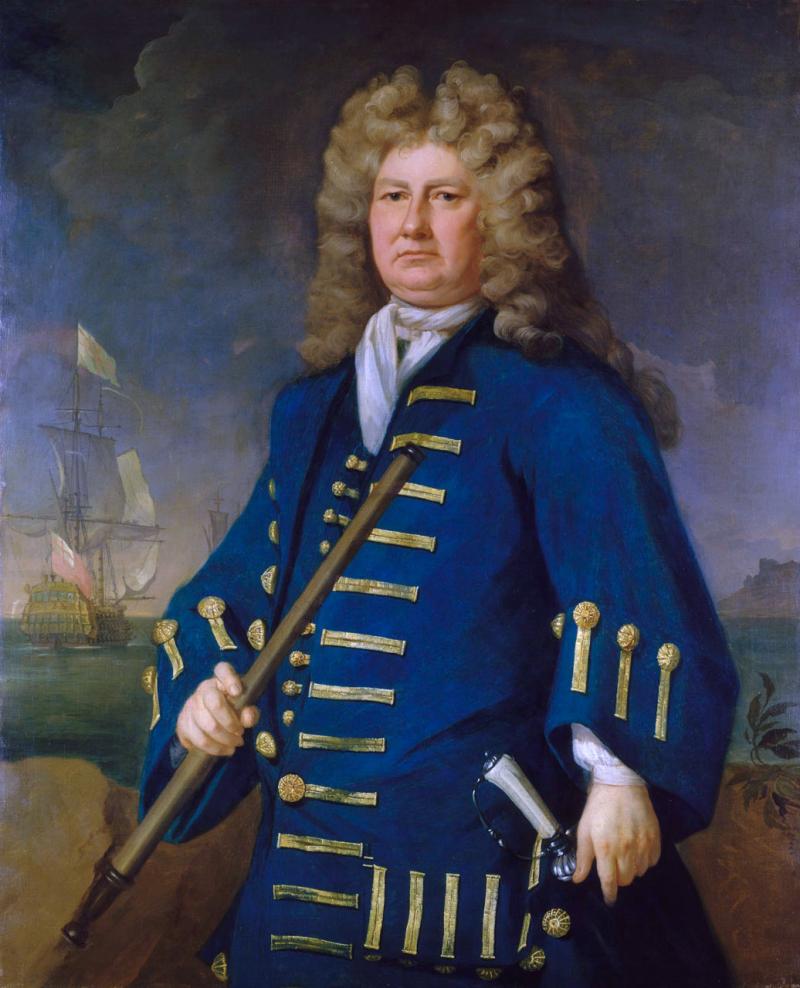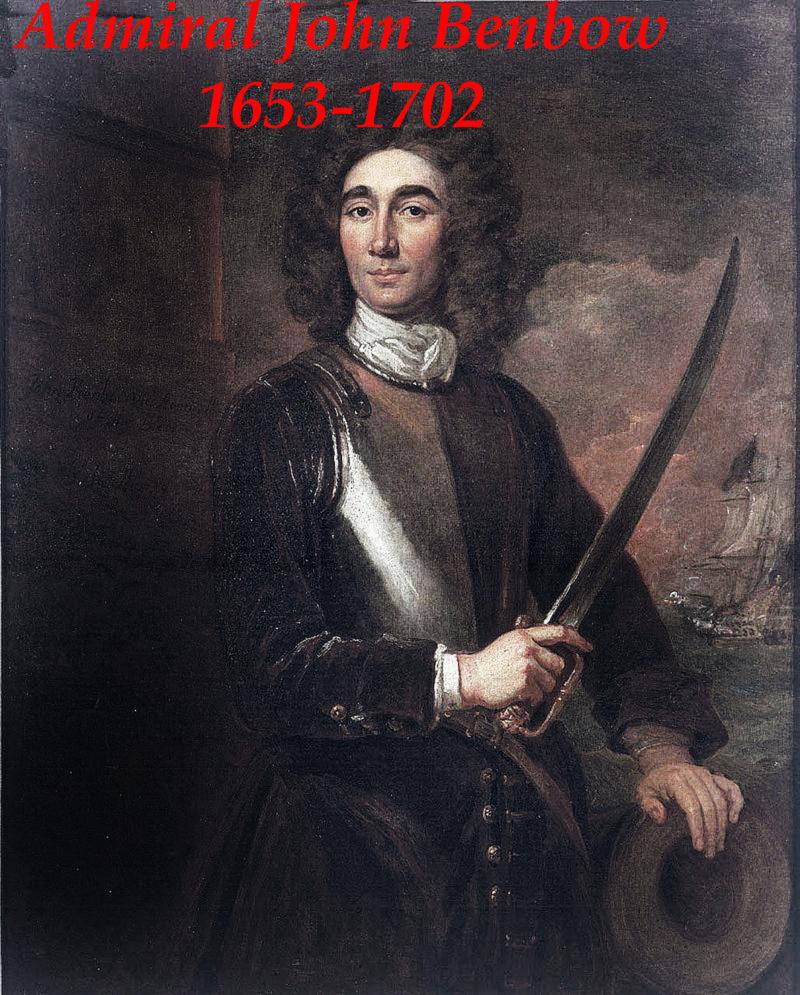A Very Good Early 18th Century English Naval Officer's, Rare, Sawback Bladed, With Shell Guard, Sword- Cutlass
Staghorn grip, shell guard, brass hilt, with curved saw-back blade. Overall in superb condition for age. In the days of the early Royal Navy, officers up to the rank of admiral carried short swords/cutlasses in the pattern of hunting swords, with both straight or curved blades, fancy mounted single knucklebow hilts with principally stag horn grips, and some with shell guards, and saw-back blades. The hilt is of finely worked brass. Sawback blades were rare but comprehensibly useful at sea, in combat they could be used to saw tangled ropes, fallen masts and rigging, and even for the the removal of limbs if the surgeon was indisposed or simply too busy removing other matelots legs and arms. For anaesthetic the man could bite on a piece of rope or leather while his limb was sawn off. Out of interest, the arm or leg stumps were dipped into boiling molten tar that at a stroke cauterized the wound and sterilised it, and then, subsequently it became sealed it off once the tar cooled, ready to later fit a custom made wooden or whale bone peg-leg, or, an iron hook for a hand, once the amputation had healed over.
There are numerous portraits in the National Portrait Gallery and The National Maritime Musuem that show British Admirals such as Benbow and Clowdesly Shovel holding exactly such swords.
Picture in the gallery of Admiral Cloudsley Shovell with his near identical sword. Another portrait of Admiral Benbow with his.
John Benbow (10 March 1653 – 4 November 1702) was an English officer in the Royal Navy. He joined the navy aged 25 years, seeing action against Algerian pirates before leaving and joining the merchant navy where he traded until the Glorious Revolution of 1688, whereupon he returned to the Royal Navy and was commissioned.
Benbow fought against France during the Nine Years War (1688–97), serving on and later commanding several English vessels and taking part in the battles of Beachy Head, Barfleur and La Hogue in 1690 and 1692. He went on to achieve fame during campaigns against Salé and Moor pirates; laying siege to Saint-Malo; and fighting in the West Indies against France during the War of the Spanish Succession (1701–1714).
Benbow's fame and success earned him both public notoriety and a promotion to admiral. He was then involved in an incident during the Action of August 1702, where a number of his captains refused to support him while commanding a squadron of ships.The action quickly revealed a breakdown in discipline amongst Benbow's captains. He had intended that the 64-gun HMS Defiance under Captain Richard Kirkby would lead the line of battle, but Kirkby was not maintaining his station. Benbow decided to take the lead himself, and Breda pulled ahead, followed by the 50-gun HMS Ruby under Captain George Walton. The two maintained contact with the French throughout the night, but the other five ships refused to close. The chase ensued until 24 August, with only Benbow, Walton, and Samuel Vincent aboard HMS Falmouth making active efforts to bring the French to battle. At times, they bore the brunt of the fire of the entire squadron. Ruby was disabled on 23 August, and Benbow ordered her to retire to Port Royal.44 The French resumed the action at two in the morning on 24 August, the entire squadron closing on Breda from astern and pounding her. Benbow himself was hit by a chain-shot that broke his leg and he was carried below.
Benbow was determined to continue the pursuit, despite his wounds and despite Captain Kirkby's arrival on board, attempting to persuade Benbow to abandon the pursuit. Benbow summoned a council of war, and the other captains agreed, signing a paper drafted by Kirkby which declared that they believed "that after six days of battle the squadron lacked enough men to continue and that there was little chance of a decisive action, since the men were exhausted, there was a general lack of ammunition, the ships' rigging and masts were badly damaged, and the winds were generally variable and undependable." They recommended breaking off the action and following the French to see if the situation improved. Benbow had "seen the cowardly behaviour of some of them before, and had reason to believe that they either had a design against him or to be traitors to their country if an opportunity happened that the French could have destroyed the Admiral". He, therefore, ordered the squadron to return to Jamaica. On their arrival, he ordered the captains to be imprisoned, awaiting a trial by court-martial.
Benbow received a letter from du Casse after the engagement:
Sir,
I had little hopes on Monday last but to have supped in your cabin: but it pleased God to order it otherwise. I am thankful for it. As for those cowardly captains who deserted you, hang them up, for by God they deserve it.
Yours,
Du Casse
Benbow instigated the trial and later imprisonment or execution of a number of the captains involved, though he did not live to see these results. These events contributed to his notoriety, and led to several references to him in subsequent popular culture.
Code: 25242



